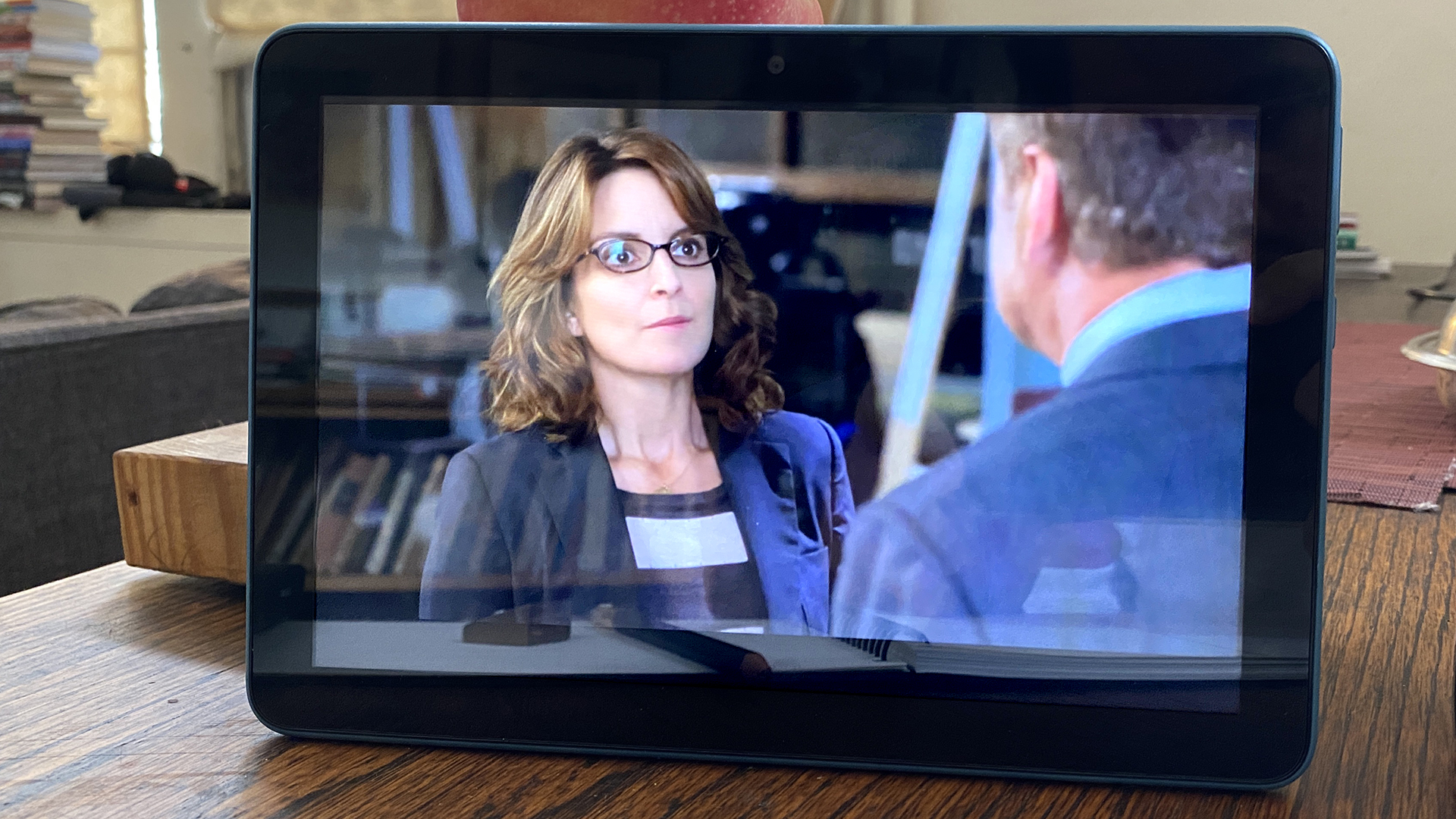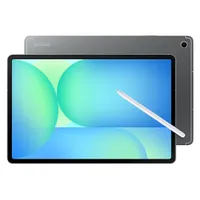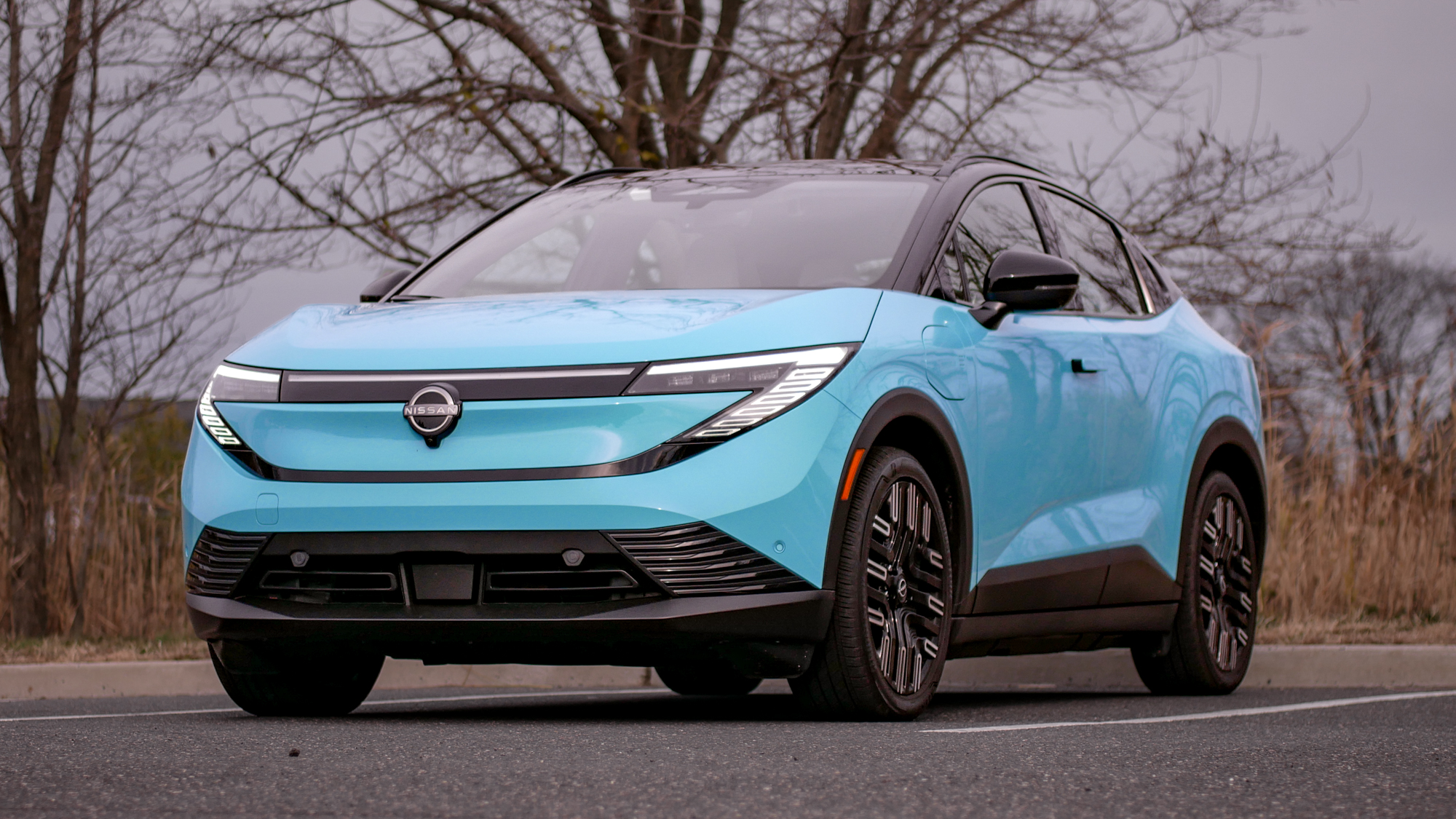The best tablets in 2025: our top picks tested and rated
These are the best tablets you can buy right now, based on our hands-on testing
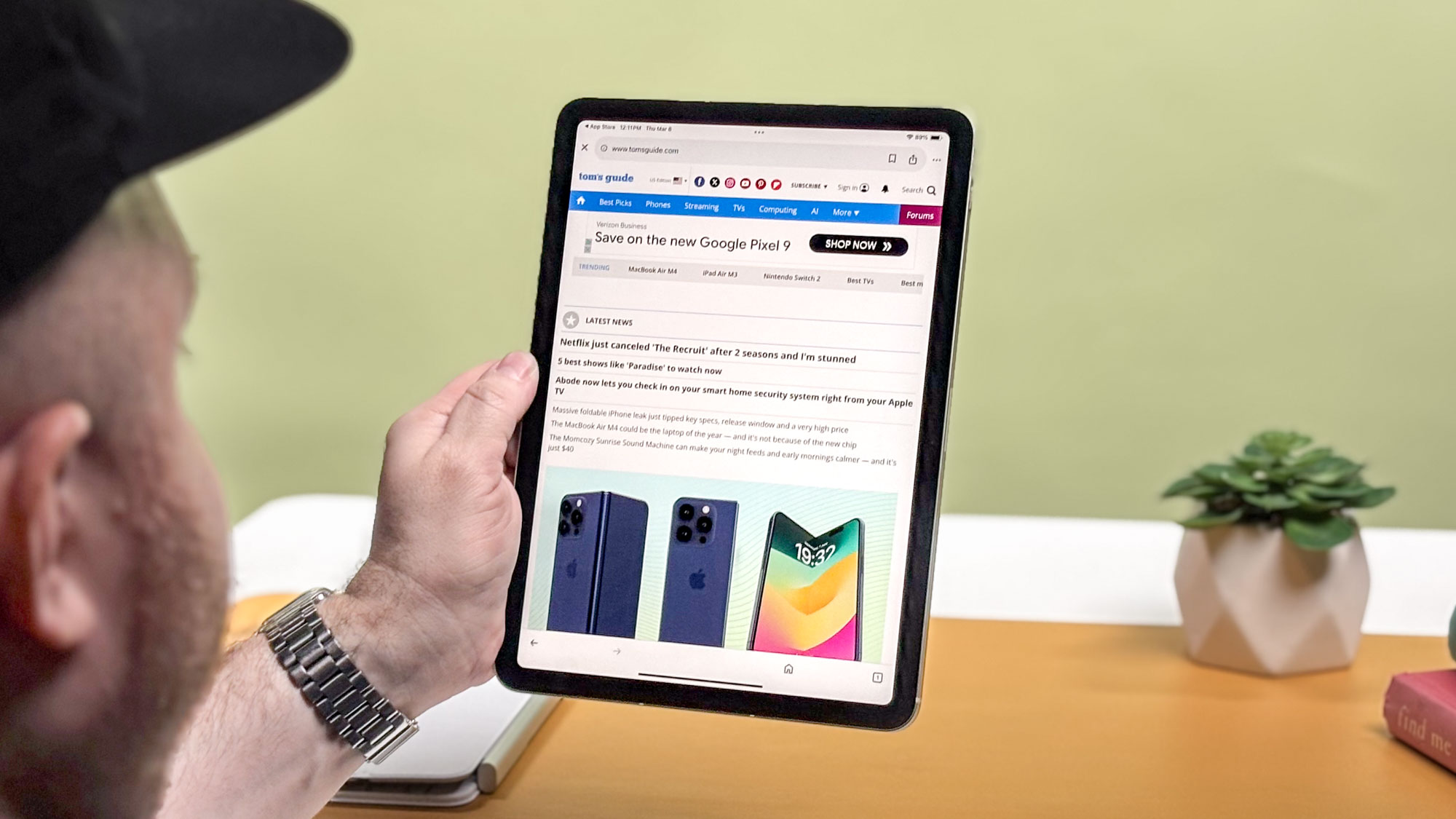
The best tablets on the market right now feel like computers we used to see in sci-fi TV shows, with eye-catching touchscreens and enough speed and battery life to function as your main PC for most tasks.
I know because my team and I review dozens of slates from Apple, Amazon, Microsoft, Samsung and more every year, so I know firsthand what the best tablets are for most.
I usually recommend Apple's M3 iPad Air as the best tablet for folks who want a quick recommendation because it's a premium slate that offers many of the same strengths as the high-end iPad Pro for hundreds less, so you get really killer value.
For those who prefer Android I recommend the OnePlus Pad 3 instead because it's a fast, beautiful slate that rivals Apple's best iPads in terms of battery life and performance. OnePlus isn't as well-known as Apple in many places, but the company's tablets rival anything Cupertino cranks out.
Admittedly these tablets are pricey, so if you're on a budget or need a durable tablet for a kid I recommend an Amazon slate like the Amazon Fire 8 because it's a workhorse tablet that costs roughly a hundred bucks, so you're not out an arm and a leg if it breaks.
Looking for more tips, advice and hands-on photos? Scroll on down, because I have a few more recommendations and a lot more buying advice (not to mention hands-on reviews and test results) in this regularly-updated guide!
The quick list
In a hurry? Here's a brief overview of the tablets on this list, along with quick links that let you jump down the page directly to a review of whichever tablet catches your eye.

Apple's M3 iPad Air gives you everything you'd want from a tablet in a light, sturdy and gorgeous design. It's impressively fast, the battery life is nice and long, and you get all of the useful features of iPadOS in either 11" or 13" varieties.
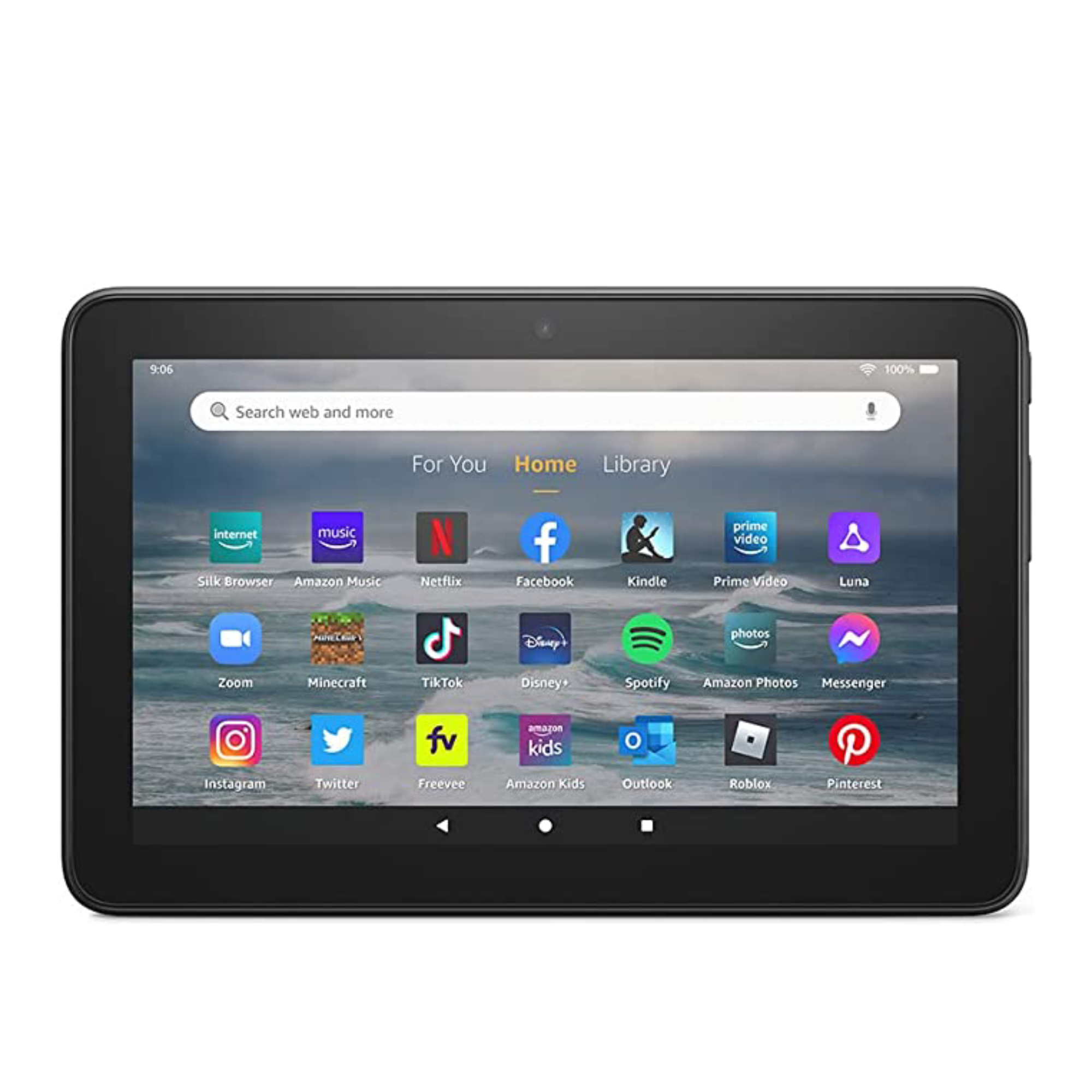
If you just want a tablet for not much money, the $99 Amazon Fire 8 is a solid choice. This no-frills slate is small and durable but also weak, hobbled by Amazon's FireOS and sporting a low-res screen, but those are drawbacks you should expect at this price.

In terms of the best bang for your buck, the latest iPad is the best way to go. With a sturdy, premium build quality and A16 chip — all for $299 — this is a fantastic low-cost iPad that will last you for years.
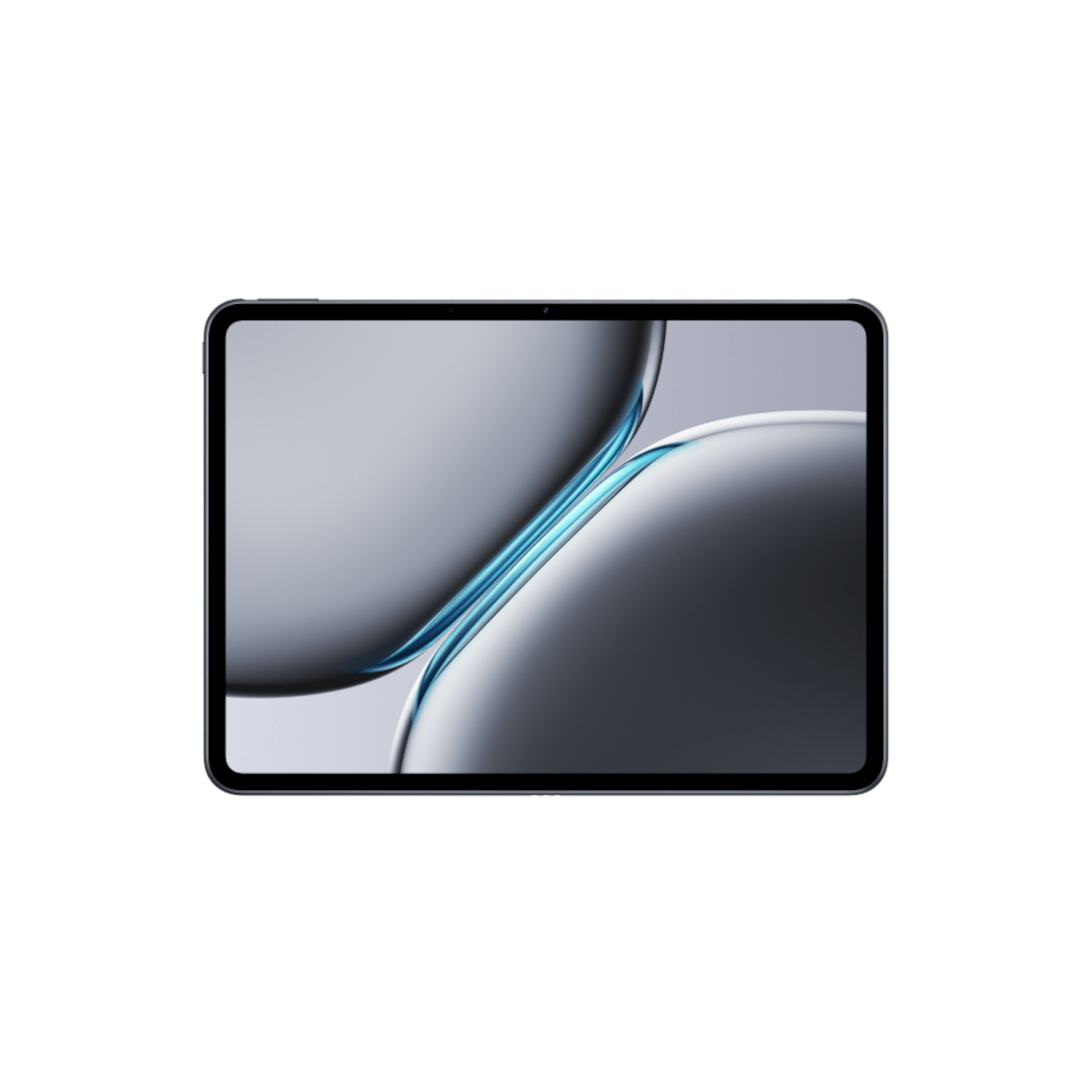
The OnePlus Pad 3 makes a bold statement with its curved edges and unique 7:5 aspect ratio. Videos and games look great on its vivid 13.2-inch 144Hz display. Its Snapdragon 8 Elite chipset and 12GB of RAM make apps and games run smooth and fast. It's just as good as any iPad, and the best Android tablet we've tested.
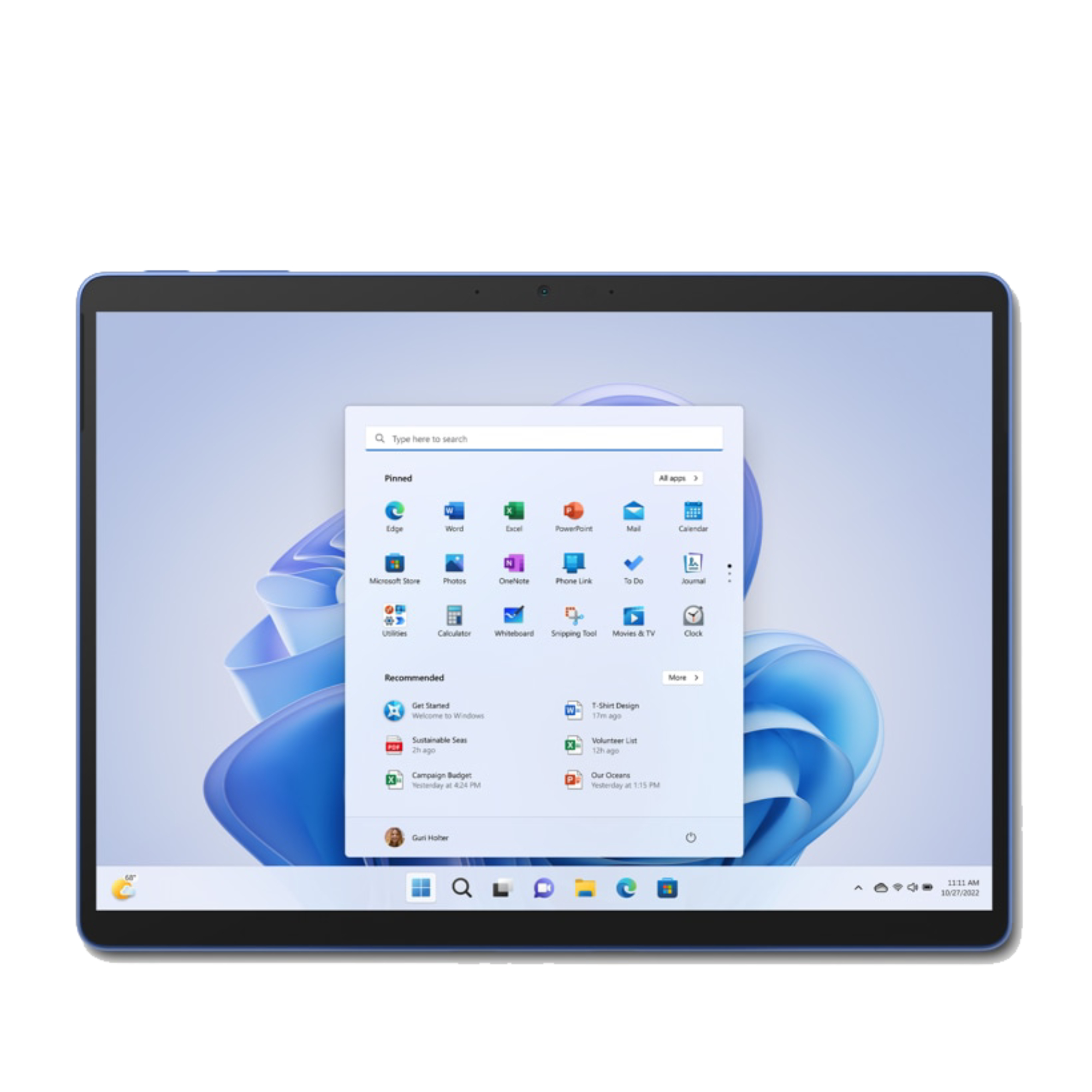
Windows 11 is the most touch-friendly version of Windows yet, and if you want to use it on a tablet I recommend Microsoft's Surface Pro 11. It's a solid tablet that works well enough for getting things done if you pay for the detachable keyboard.
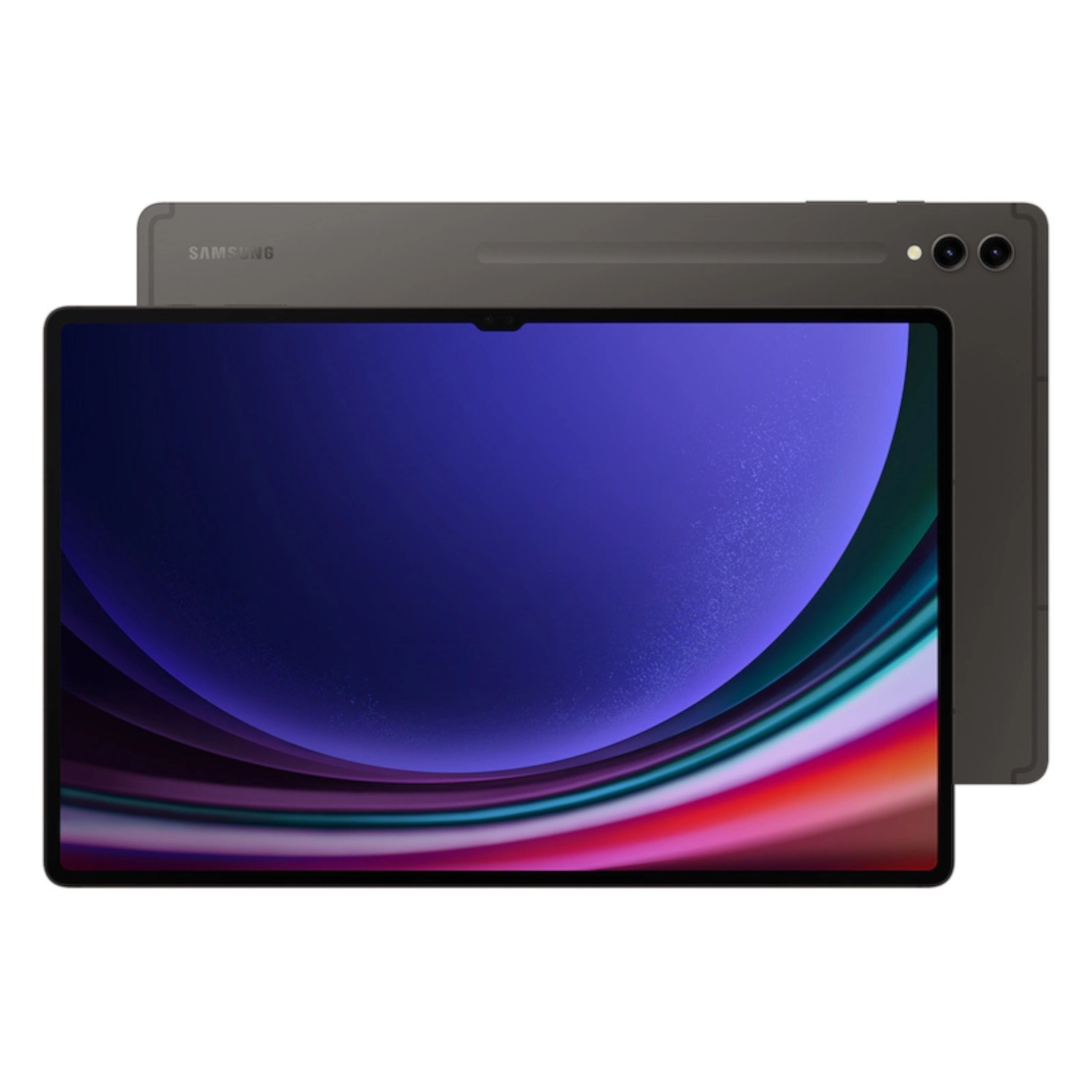
Samsung's Galaxy Tab S11 Ultra is the tablet to get when you want the biggest screen possible because the 14.6" AMOLED 120Hz display is big, beautiful and powered by a speedy MediaTek chipset.
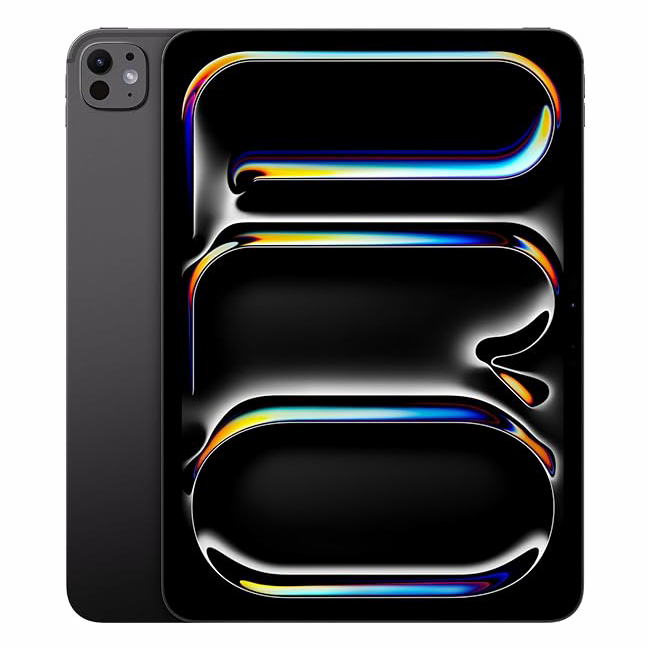
When you want the biggest, best iPad on the block, splurge for the 1TB 13-inch iPad Pro with an M4 chip inside. This is the most powerful iPad yet made, plus it sports a gorgeous OLED display and incredible battery life. This is a tablet for power users and gamers alike.
Load the next products...
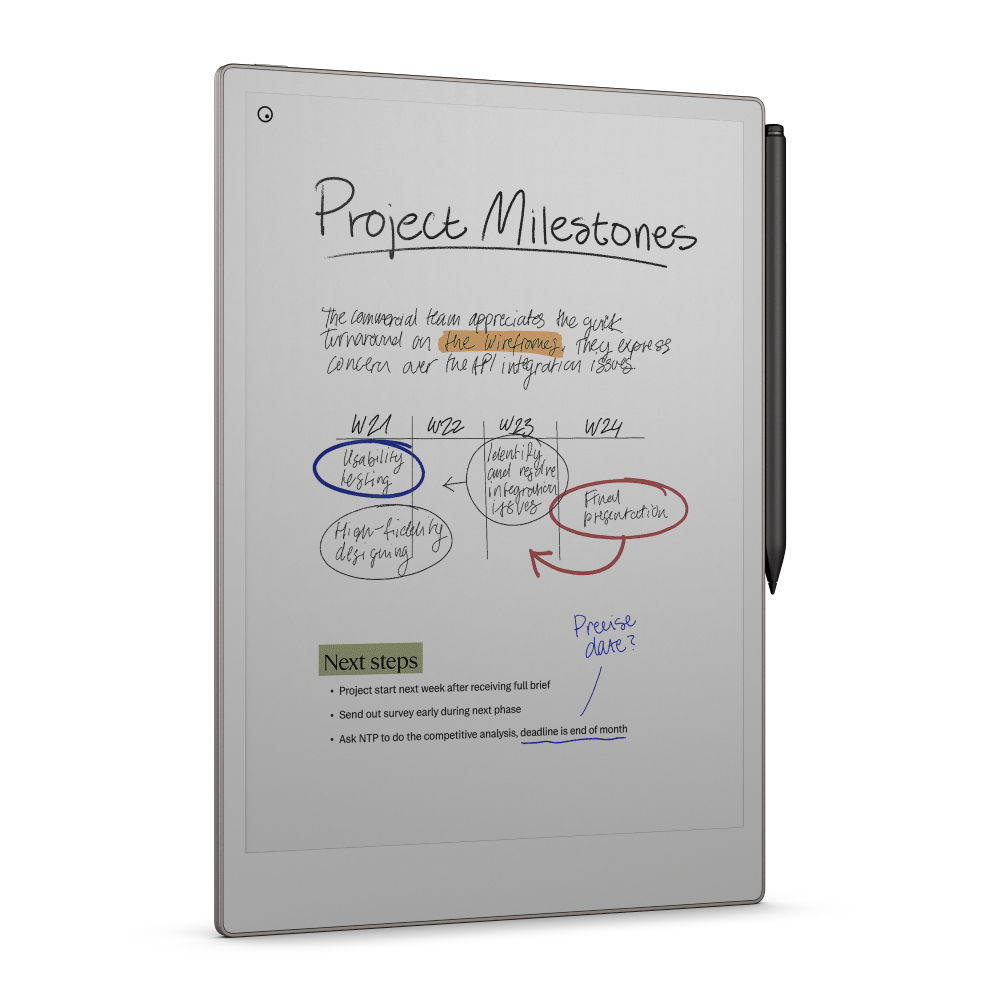
This elegant e-paper slate aims to recreate the feeling of writing on paper, and this model introduces a first for the line: colors! The e-paper display is great for reading and writing, but the tablet is laggy enough to cause frustration and it can't do as much as the rest of the tablets on here.
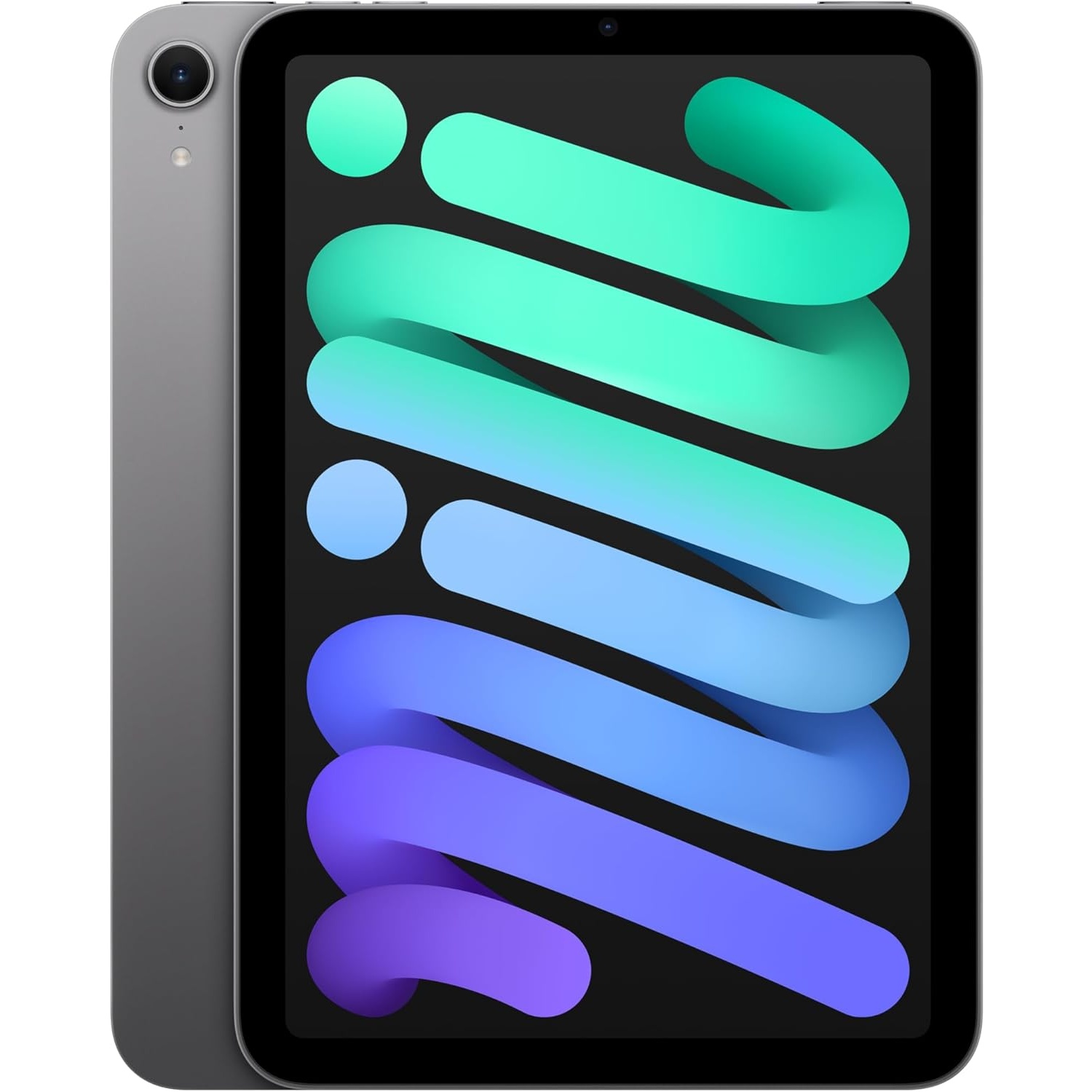
The iPad mini 7 is what I recommend most to folks who want a small tablet because it delivers a full iPad experience in a smaller 8.3-inch slate that weighs less than a pound. The Amazon Fire 8 is a hair smaller and lighter, but it can't hold a candle to the iPad mini 7's A17 Pro-powered performance.
The best tablets you can buy
Why you can trust Tom's Guide
The best tablet overall

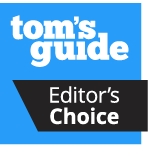
Specifications
Reasons to buy
Reasons to avoid
If it ain't broke, don't fix it. That's exactly what the M3 iPad Air epitomizes — changing nothing about the design or display, but seriously beefing up the internals with a new chip. And just like that, it is my new favorite tablet.
On the face of it, you're getting more of the same, which is no bad thing. Both the 11-inch and 13-inch versions sport a thin, utilitarian aluminum design that I love, with a weight of 1.05 pounds that makes it a serious cinch to hold in one hand.
For reading, watching, working and playing, that Liquid Retina display is sharp and vibrant — not as mesmerizing as the iPad Pro's OLED panel, but still impressive for watching episodes of Severance.
Meanwhile, it's what's happening under the hood that is making the biggest difference here. That M3 chip is delivering up to a 17% improvement in performance in our own testing, including a sharp increase in single-core speeds which assures everything feels fast and fluid to the touch (while also helping to keep those Apple Intelligence features all nice and zippy).
Though it does take a hit on the battery life, you're still getting around the 10-hour mark as promised by Apple.
Of course, there are some nits to pick with even our best tablet of the bunch. Frustratingly, this still doesn't pack Face ID support — seems perfectly placed for this iPad.
And if you want to make the most of your new iPad Air, the peripherals are expensive. Starting at $269 for the Magic Keyboard, you could easily start paying the same total price of a brand new M4 MacBook Air. So if you want to equip your new iPad with a keyboard folio and stylus, you're going to be paying a pretty penny.
But those are minor complaints about what I think is easily the best tablet for most people. M3 performance doesn't disappoint, the screen and speakers give you a great experience with all your movies and games, and the battery life feels reliable — all in a sleek, thin shell that will last you for a good, long while.
See our full iPad Air M3 review.
The best budget tablet
Specifications
Reasons to buy
Reasons to avoid
Amazon’s Fire tablets are some of the cheapest slates you can buy, but I think the Amazon Fire HD 8 is probably the cheapst you'd actually want to own. It’s not the best performer, but for the $100 asking price (or $115 if you want it without ads) there’s no better budget tablet on the market.
That low low asking price is the No. 1 reason why I think this is the best budget tablet, but there are other nice things to appreciate about the Amazon Fire HD 8. First and foremost it's small and light, weighing less than a pound and being barely longer than 8 inches on a side, so it's easy for kids to manage or for an adult to hold in the palm of your hand. It offers good battery life, too; Amazon promises at least 12 hours on a full charge, but in our lab testing our Amazon Fire HD 8 actually lasted longer—over 13 hours!
But let's be honest, you have to accept some notable flaws when you're paying $100 or less for a tablet. First and foremost, this tablet feels cheap thanks to its plastic chassis, but the upside of that is that it's also a little less scary when your kid or friend accidentally drops it.
What's a little more irritating is the low-resolution screen. The 8-inch (1280 x 800 pixels) display gets nice and bright, which is great, but you'll invariably notice that the sub-1080p screen renders images and videos a little worse than a more expensive modern tablet on this list.
The built-in cameras and speakers also aren't great, and you could do better with every other tablet on this list. But every other tablet on this list is also far more expensive than the Fire 8, and I think this $100 slate is a real value for folks who want a cheap tablet that you won't mourn for weeks if it gets broken or stolen. It’s especially well-suited to being a child’s first tablet, since it’s easy to replace and runs all the apps on Amazon’s App Store.
Oh, that's one other thing to remember before you buy: Amazon’s Android app selection is more limited than you get on a full Android tablet like the OnePlus Pad 3, but you still get most of the hits—plus you can take advantage of Amazon’s robust parental controls for FireOS.
Read our full Amazon Fire 8 review.
The best value tablet
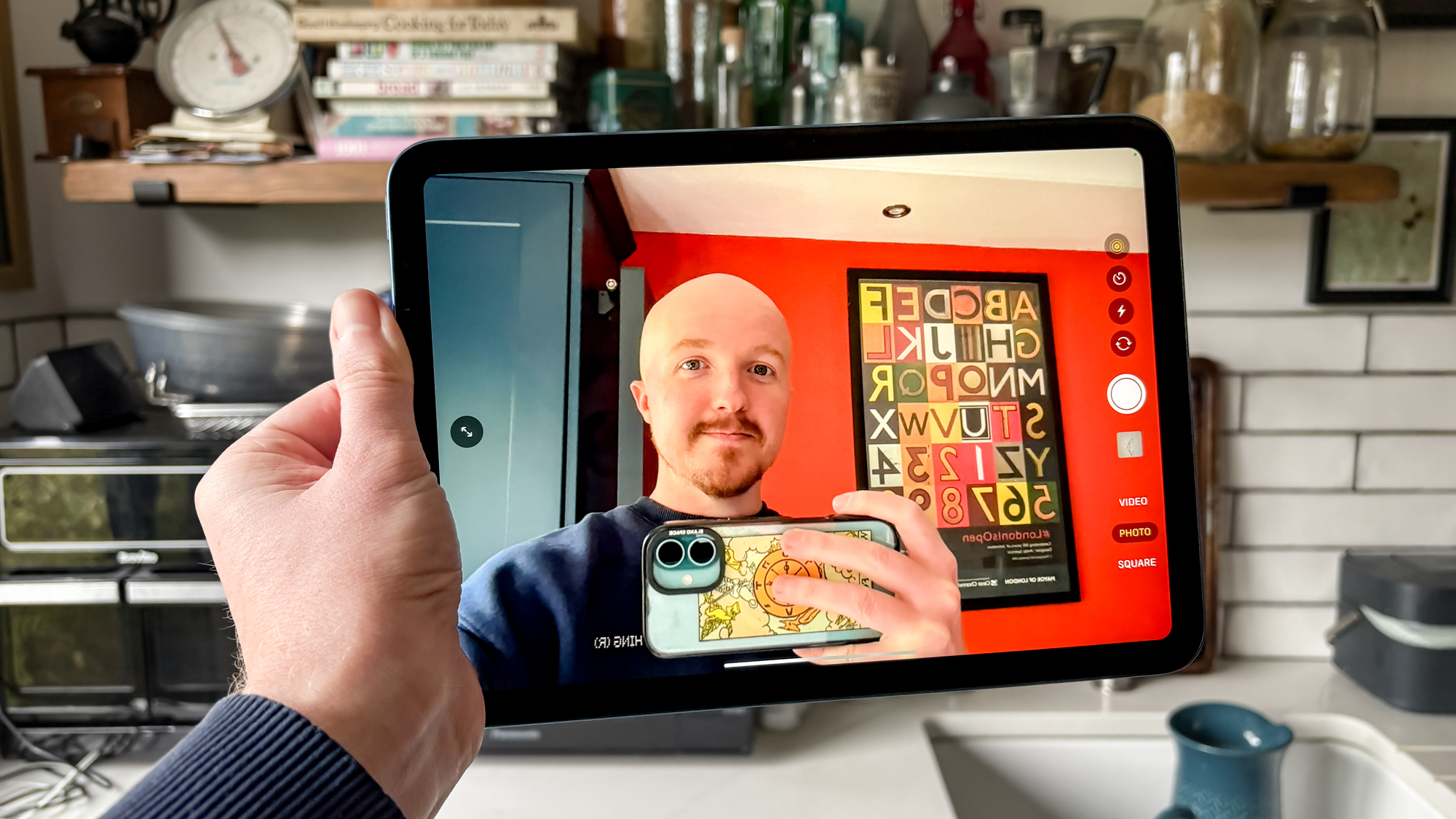
Specifications
Reasons to buy
Reasons to avoid
While Amazon dominates the low-cost tablet market with its cheap Fire slates, the fact that tablets like the Fire HD 8 are really easy on your budget doesn't always outweigh their middling performance.
If you have a smidge more money to spend and you want to make sure you buy the absolute best value in tablets right now, I recommend you save up for the basic Apple iPad. While it's a few hundred bucks more than the Fire HD 8, Apple's entry-level iPad is a far better tablet with a much improved screen, better performance and battery life and a far bigger App Store to access.
So while the entry-level iPad isn't exactly "cheap" since it starts at over $300, that's still a pretty good price for a tablet and this tablet is one of the best you can buy because of its durable design, compelling features and strong performance.
You can read our full review (linked below) to see what I mean as well as photos of the iPad in action, but here's the highlights: Apple's latest iPad launched in 2025 and offers better battery life and performance than its predecessors in the same sleek, durable chassis.
And while the Apple A16 chip inside isn't as capable as the M5 chip Apple puts in the iPad Pro, the entry-level iPad is nearly as fast as the iPad mini 7 and not too far behind the iPad Air M3. So while the basic iPad is hundreds of dollars less than its siblings it doesn't actually feel like you're getting half the tablet when you buy the basic iPad for half the price of an iPad Air.
In fact, the basic entry-level iPad actually has a slightly brighter screen than the iPad mini 7 (according to our display tests) and lasts longer on a full charge than either the iPad Air M3 or the iPad mini 7, as you'll see from the chart of our battery test results below.
So while the entry-level Apple iPad isn't as powerful as the more expensive options on this list and has a screen that can't match the visual glory of an OLED display, it gives you all of the benefits of an Apple tablet at the lowest possible price of entry—yet it still outperforms some of the pricier slates on this list despite costing half as much.
For all those reasons and more I recommend the entry-level Apple iPad as the best value in tablets you can get right now, and the $349 starting price is a real sweet spot for value in the tablet market.
Read our full Apple iPad 2025 review.
The best Android tablet
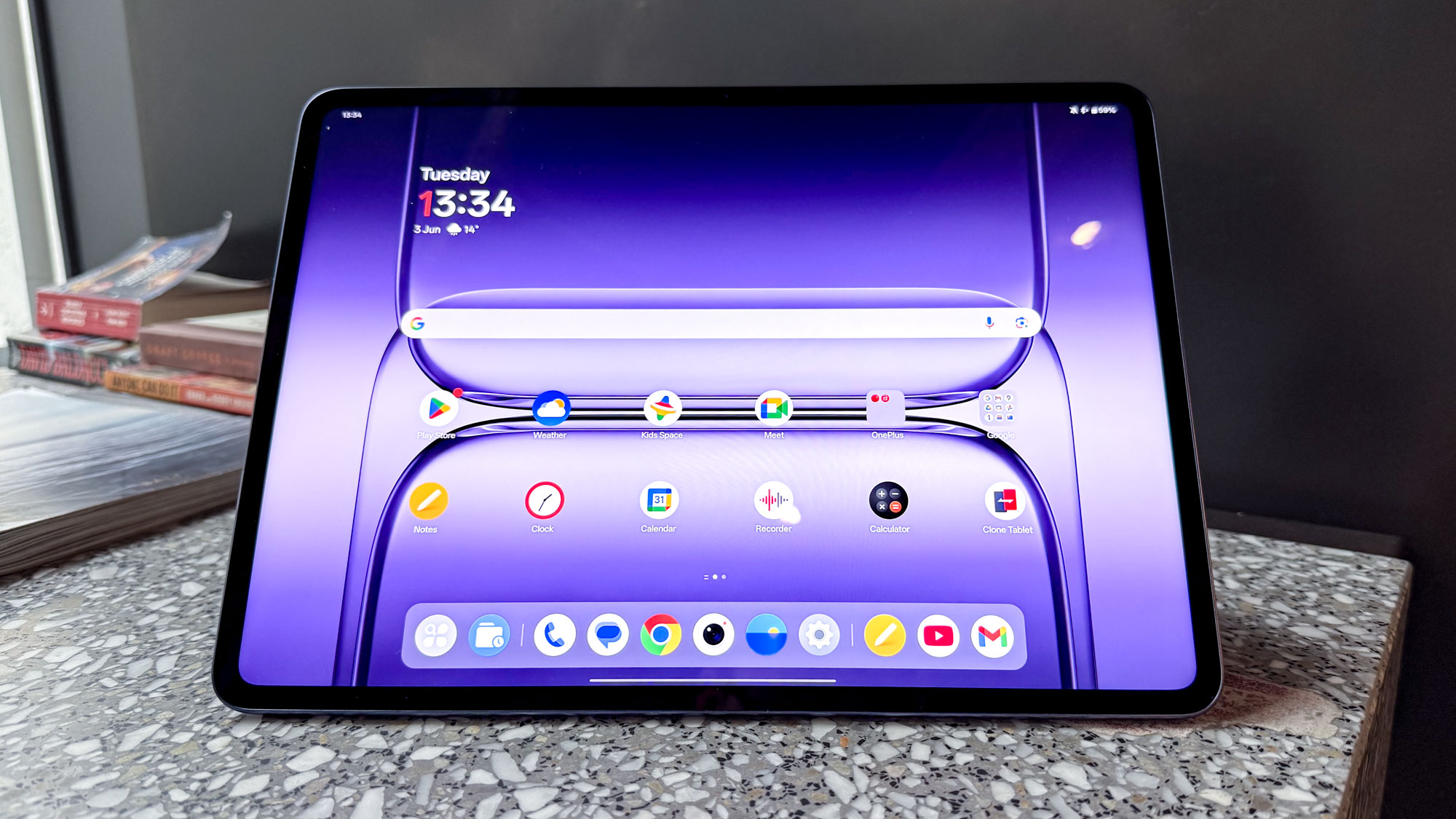

Specifications
Reasons to buy
Reasons to avoid
The OnePlus Pad 3 is a high-end Android tablet that's just as good as anything Apple makes, and it costs hundreds of dollars less than the iPad Pro.
I'm fond of this slate's unique curved design and I recommend it as the best Android tablet for most folks because it gives you a bright, 13.2-inch (3392 x 2400pixels ) LCD screen with all-day battery life and plenty of power for a little more than an iPad Air.
Though it's pricier than the original OnePlus Pad 2, it still delivers great value thanks to its speed, cameras and iPad Air-beating battery life.
That’s right: in our battery test, the OnePlus Pad 3 lasted 16 hours and 21 minutes on a full charge, which is hours longer than the iPad Air M3, the iPad Pro M4 and almost every other tablet on this list. That all-day battery life is handy to have in this tablet because its deeply rounded edges make it more comfortable to hold for long periods than any other slate on the list, and the massive 13MP camera on the back is good enough that you might be tempted to take pictures with your tablet.
And while the iPad Air M3 and iPad Pro M4 are faster than the OnePlus Pad 3 in some of our tests, the OnePlus actually slightly outperforms them in some of our graphical tests.
For those of you interested in getting work done on a tablet, the OnePlus Pad 3 is arguably a more effective productivity device than Apple’s iPads, in part because Android is a more versatile operating system (so it’s easier to move files around and run a wider variety of apps) but also because the OnePlus Pad 3’s optional stylus and keyboard cover are cheaper than their iPad counterparts.
So if you’re aiming to build a productivity tablet setup on the cheap, the OnePlus Pad 2 paired with the OnePlus Pad 3 Smart Keyboard ($199) and OnePlus Stylo 2 ($99) will get you there for less money than Apple charges for the same kinds of accessories.
Read our full OnePlus Pad 3 review.
Best Windows tablet
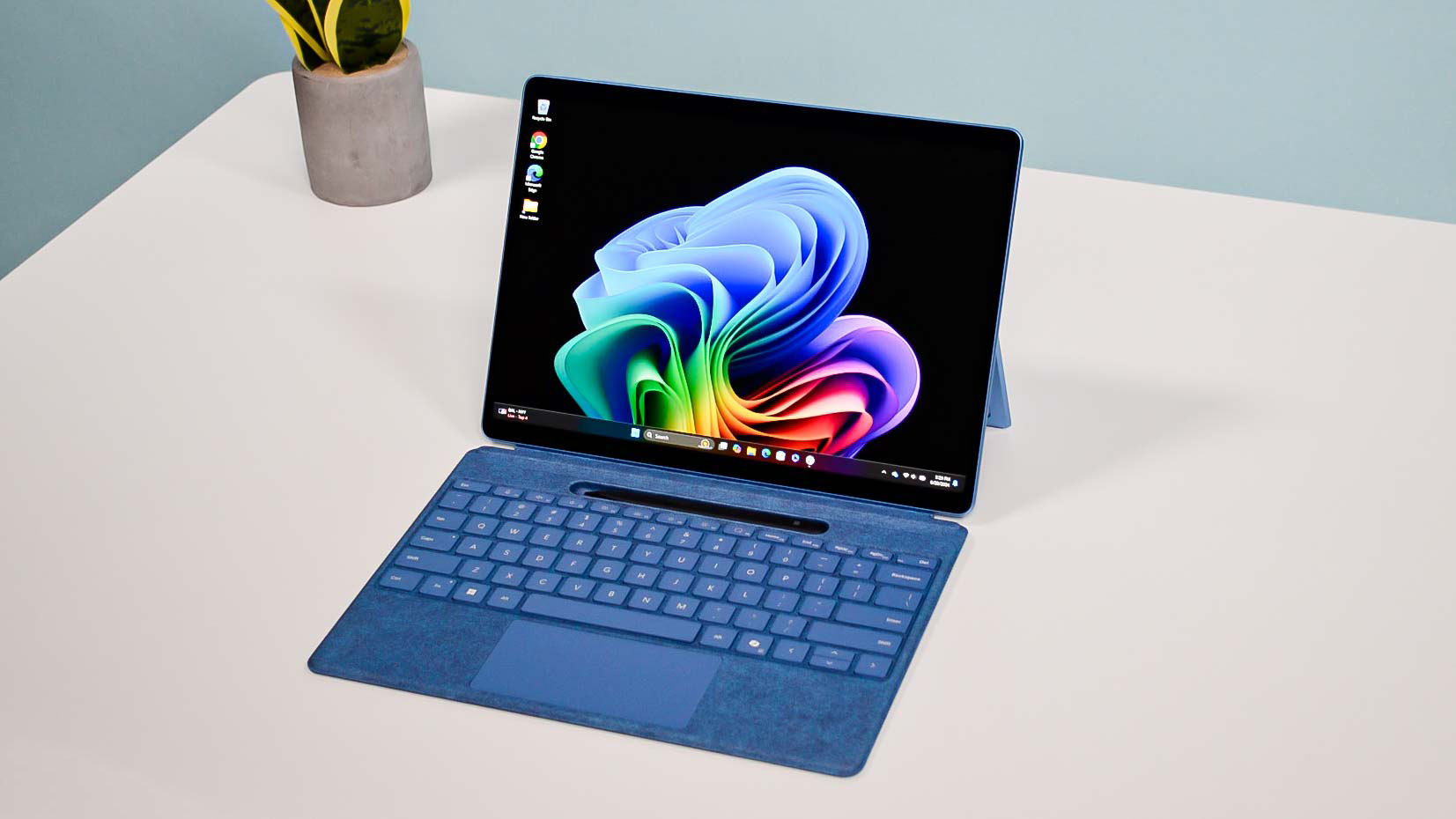

Specifications
Reasons to buy
Reasons to avoid
The Microsoft Surface Pro 11 is a Windows 11 tablet for users who want the versatility of Windows with the accessibility of a tablet, and it’s the best yet thanks to the inclusion of Qualcomm’s new Snapdragon chips.
I recommend it as the best Windows tablet for most people because it’s faster and better-looking than any competing Windows slate – and there aren’t many to choose from. While Microsoft’s Surface Pro tablets have been a bit boring for years, the Surface Pro 11 shakes things up with a new OLED display option and a new Snapdragon X chip under the hood. That Snapdragon chip pushes this tablet to new heights of speed and power efficiency, making it the fastest tablet on this list save for the iPad Pro M4. It also helps that this slate lasts just over 12 hours in our battery tests, which means you can carry it for a full day without worrying too much about plugging in.
And while you can get by just fine with the base model ($999) and its 13-inch LCD display, those who can afford to splurge by spending $600 on upgrading to the OLED-equipped version should appreciate the additional vivacity and brightness of the display, which gets brighter than the iPad Air (2024) in our display tests.
However, there are a few caveats to know before buying. While Microsoft is keen to talk up the Windows 11 AI features this tablet supports thanks to its Snapdragon chip, in our hands-on testing we didn’t find them to be very valuable or useful save Live Captions, which uses AI to automagically display captions for any audio you’re listening to in real-time. And while this Windows tablet screams out to be used as a productivity device, Microsoft will gouge you on peripherals in a very Apple-like way if you go that route. At time of review, for example, the detachable Surface Flex Pro keyboard cost an additional $349 and the Surface Slim Pen 2 stylus cost another $100, which means you’re paying nearly another $500 just to outfit this Windows tablet with the accessories that allow you to use it to maximum effect.
Overall, though, this is the best Surface Pro tablet yet, and the best Windows 11 tablet on the market.
Read our full review of the Microsoft Surface Pro 11.
The best big-screen tablet
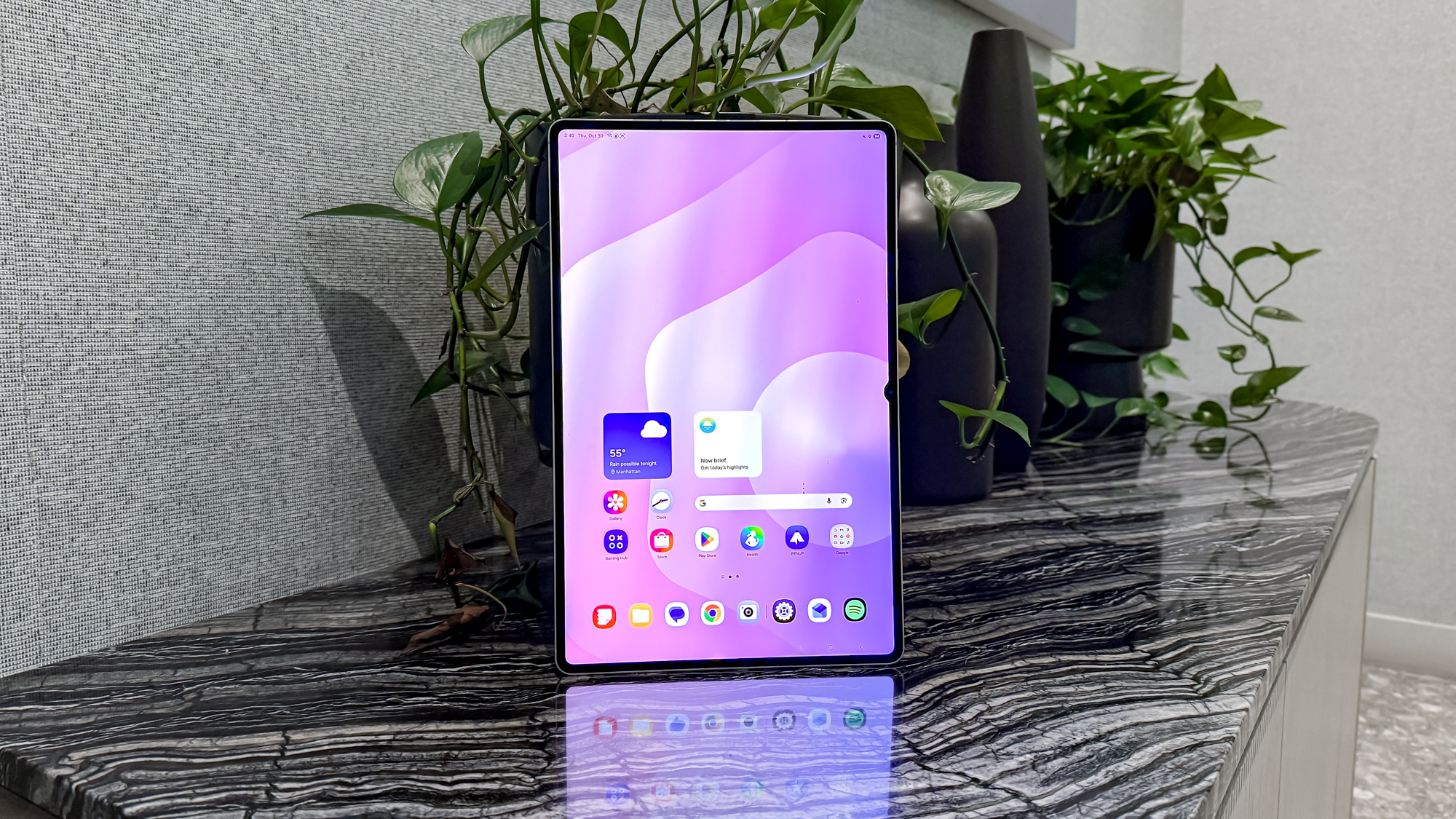

Specifications
Reasons to buy
Reasons to avoid
When you absolutely, positively need the biggest tablet possible, opt for the Samsung Galaxy Tab S11 Ultra.
This is not only the tablet with the biggest screen but the best big-screen tablet, in my opinion, because it marries a gorgeous 14.6-inch AMOLED display with a speedy MediaTek Dimensity 9400+ chip that can run all your favorite Android apps. And despite the size of the screen this 1.5-pound slate doesn’t feel heavy thanks to its elegant ultra-thin design, which is just a smidge thinner than an iPad Air.
Of course, the size of the screen does make it feel a bit unwieldy and you’ll generally want to use two hands or a stand when using the S11 Ultra. But what a screen it is: the 14.6-inch (2,960 x 1,848 pixels) AMOLED display on our review unit looks luscious in person, and our lab testing reveals it’s actually more colorful and more color-accurate than either the iPad Air or the iPad Pro’s mini-LED display. The Galaxy Tab S11 Ultra’s AMOLED screen is also has an adaptive refresh rate capable of achieving up to 120Hz, which can make scrolling and gameplay feel smoother.
Plus, the Galaxy Tab S11 Ultra comes with a stylus packed in for free, a nice touch Apple won’t match with its iPads., However, it does come pre-installed with a bunch of Samsung apps, most of which are basically worthless if you don’t already own other Galaxy devices.
Read our Samsung Galaxy Tab S11 Ultra review.
The most powerful tablet
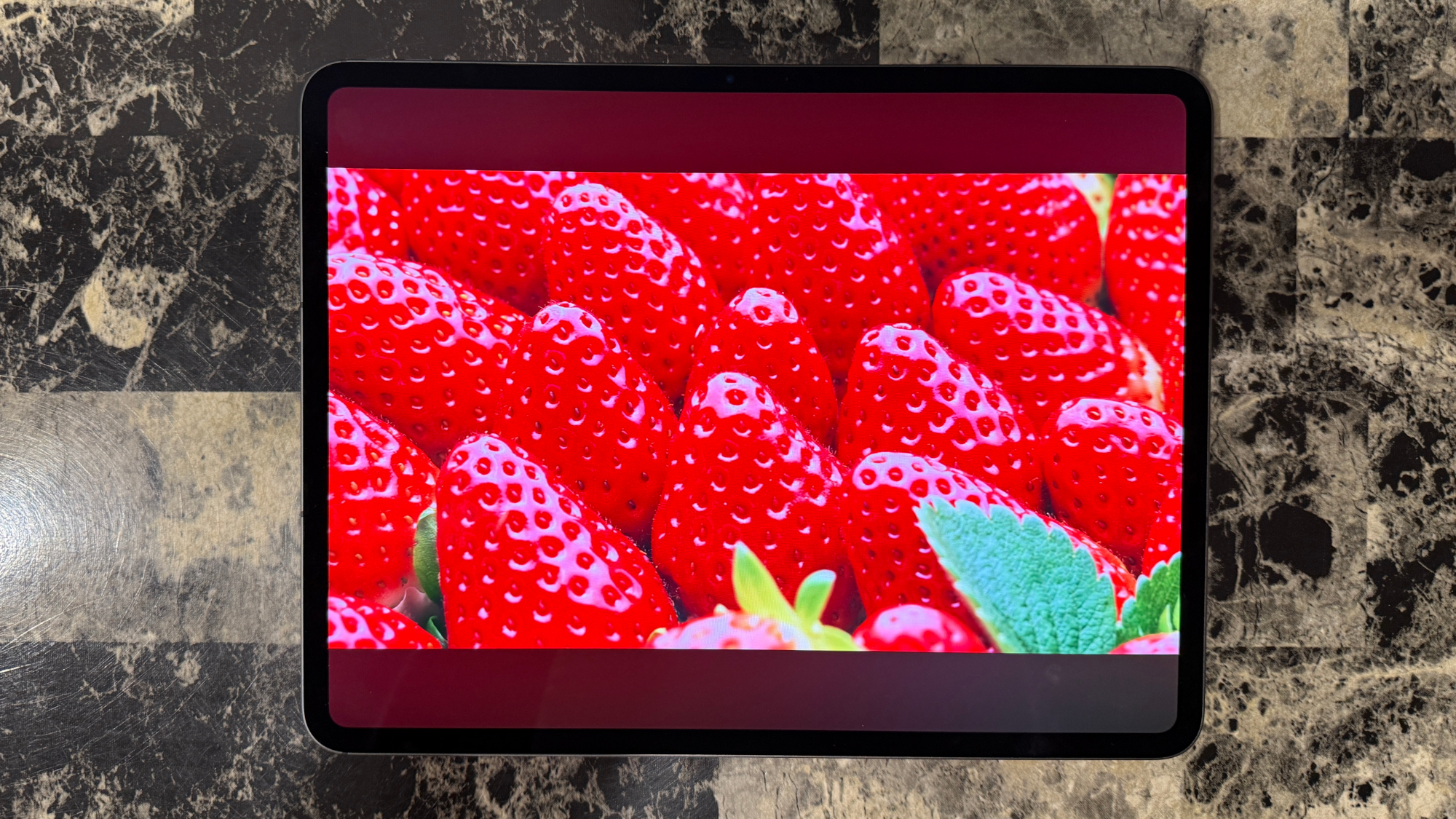

Specifications
Reasons to buy
Reasons to avoid
The very first device Apple released with its cutting-edge M5 chip was the iPad Pro, which means this is the most powerful tablet you can buy right now.
I know that for a fact because we put the iPad Pro M5 through our battery of performance tests, and it runs circles around every other tablet on this list. But the iPad Pro is more than just a powerhouse — this is Apple’s top-tier tablet, and it sports a gorgeous OLED display (in either 11-inch or 13-inch varieties) that makes everything you do on it look great. Plus, that Apple M5 chip helps it deliver the best battery life (13+ hours tested!) of any iPad on this list, and it achieves all that in a slim, elegant chassis that weighs roughly a pound.
Admittedly, most folks probably won't make full use of the M5's capabilities; frankly, the M3 chip inside the iPad Air is still plenty fast enough to handle any app you can run on it. But if you want the best of the best I know the iPad Pro M5 is it, because we put it through our benchmarking tests and this slate did better in our Geekbench CPU tests than any tablet on this list.
In our display testing lab this slate also earned rave reviews, and while it’s roughly on par with the Galaxy Tab S11 Ultra or slightly behind in terms of color accuracy the iPad Pro’s tandem OLED display gets a bit brighter, which is nice when you're using your tablet outdoors. And hey, if you want to use your expensive iPad in direct sunlight regularly, you can shell out an extra $100 for a nano-texture glass coating that makes the screen less reflective.
But that's par for the course with Apple, which typically offers high-end devices with high-end prices and expensive accessories. You'll face similar issues when buying any iPad on this list, and frankly Microsoft's tablet accessories can feel just as expensive.
So while I firmly recommend the iPad Pro M5 as the best tablet for those who want the most power and best screen, it’s not the best iPad for most people – that’s still the iPad Air, which comes in the same sizes (11-inch and 13-inch) as the Pro and offers very comaprable features yet costs far less.
Read our full iPad Pro M5 review.
The best for writers
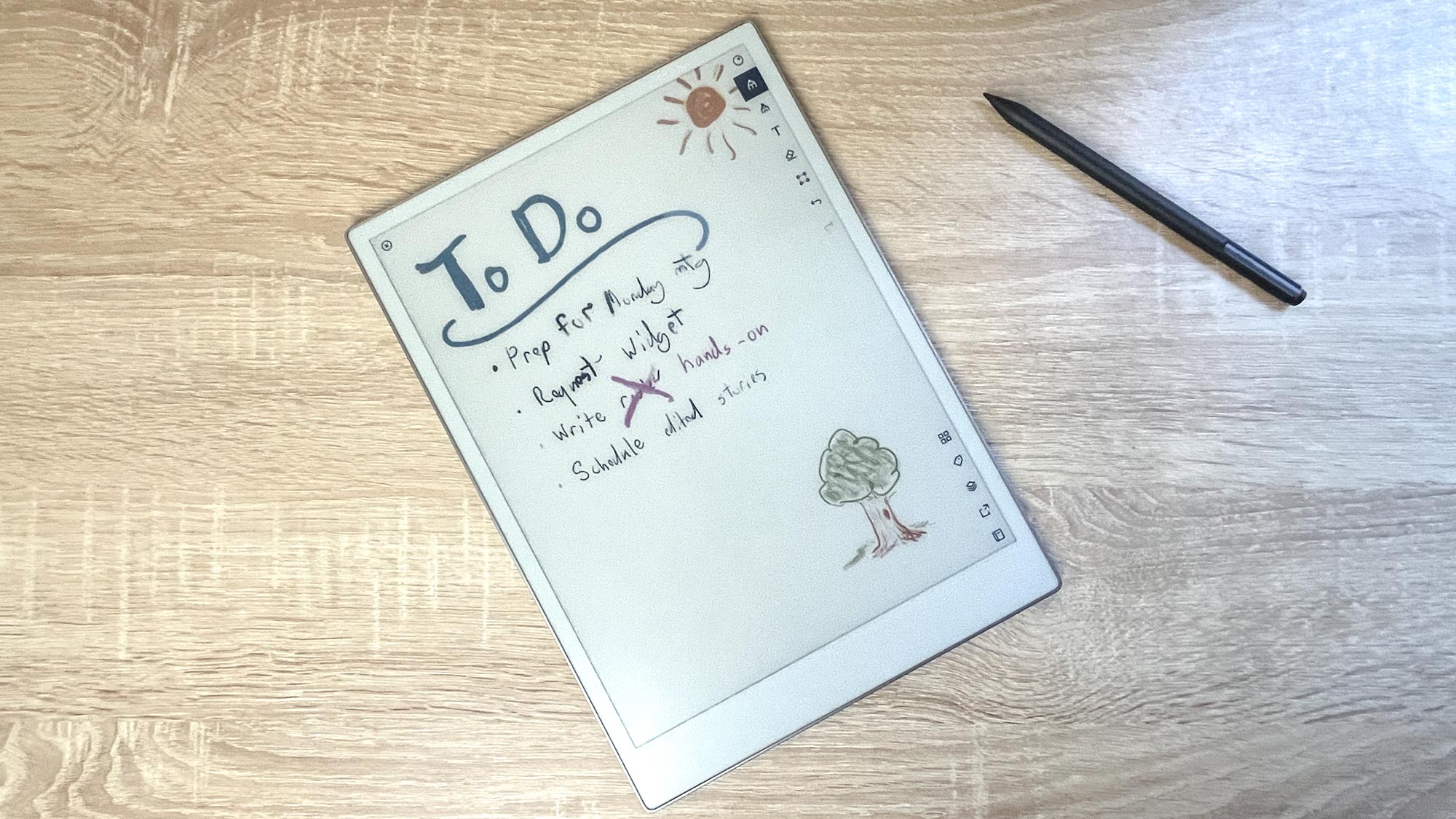

Specifications
Reasons to buy
Reasons to avoid
The ReMarkable Paper Pro is a tablet designed for readers and writers, and you can tell right away when you see its 11.8-inch e-paper display in action. Drawing a line across the screen with the ReMarkable Marker replicates the feeling of a pen on paper, but when you flip to a new page there's a noticeable delay as the Canvas Color display refreshes itself.
That's why I think this is the best tablet for writers and readers, but not so much for everyone else: you sacrifice a lot of versatility and speed to enjoy the feeling of writing on on this color e-paper display. It feels great, too, because ReMarkable engineers have worked to fine-tune the 4,000+ levels of pressure sensitivity and reduce the lag between when you draw and when a line appears to mere milliseconds.
But even so, in my testing I found that you can often notice a delay between when you paint a line or flip a page and when the action actually happens on-screen. You get used to it, but it's not much fun when you're used to the snappy responsiveness of the other tablets on this list.
Bottom line: This is the best e-paper tablet for writers who want to jot down notes or mark up digital documents on a slate that makes it feel like you're writing on paper. The added backlight (a first for the line) is also nice to have, but the cost of this tablet (as much as an iPad Air) ensures it will remain a niche product for writers.
Read our full ReMarkable Paper Pro review.
The best small tablet
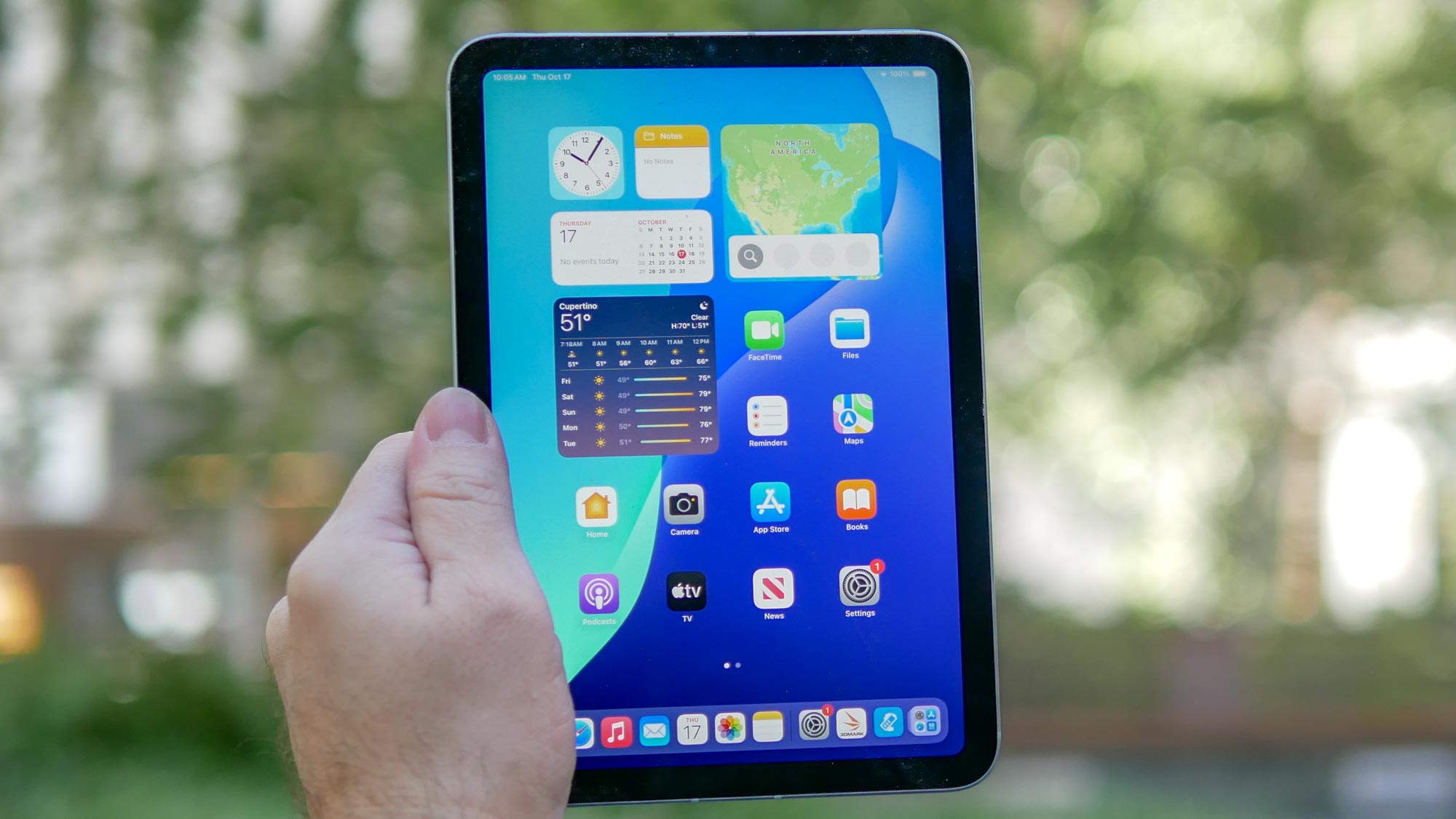
Specifications
Reasons to buy
Reasons to avoid
The iPad mini 7 is Apple's tiniest iPad updated for 2024, and it's marketed at anyone who wants all the benefits of an iPad in a smaller, lighter tablet.
We recommend it most often as the best tiny tablet for most folks because it really does deliver the full iPad experience in a smaller size, giving you easy access to everything you can do in iPadOS on a screen that's small enough for most people to hold in one hand. And if you are willing to give a child an iPad, this one is very easy for them to hold.
It doesn't feel child-sized though, as in our lab testing the A17 Pro chip powering this tablet helped it deliver speeds that rival the iPad Air 2024, which is much farther up on this list. And the battery life is great too, as it beat Apple's advertised 10 hours to last a full 10 hours and 34 minutes in our lab battery tests. Scroll down to our battery test comparison charts and you'll see that's one of the longer-lasting tablets on this list, though it can't quite last as long as the iPad Air or Google Pixel Tablet.
There are some minor frustrations with this table that I don't want to gloss over, like the fact that the front-facing camera is on the narrow edge (so you have to hold the tablet like a clipboard when on video calls) and the fact that it doesn't support the Apple Pencil 2.
But those are minor inconveniences with this otherwise excellent slate, which is easily the best tiny tablet you can buy right now.
Read our full Apple iPad mini 7 review.
Also tested
We test and review dozens of tablets every year, and even though they can't all make this list that doesn't mean they aren't good machines. There are also some really great slates that maintain their value over years, so we sometimes recommend them as good alternatives to the best tablets that are often sold at a discount.
So while these tablets didn't quite achieve the level of excellence needed to be leaders of the pack, they're good alternatives well worth considering if they meet your unique needs, or if you can't find your first choice on sale.
Google Pixel Tablet (★★★★☆)
The Google Pixel Tablet stands out from every other on this list by being the only one to come with its own speaker/charging dock. That's a killer feature for some, but for the rest of us this is basically an Android tablet that's comparable to the basic iPad (albeit cheaper).
Read our full Google Pixel Tablet review.
Samsung Galaxy Tab S10 FE Plus (★★★★☆)
The Samsung Galaxy Tab S10 FE Plus isn't quite as capable as the OnePlus Pad 3 or as affordable as Amazon's tablets, but that doesn't mean it's not a good tablet. It's roughly the same size as the OnePlus Pad 3, but the Galaxy Tab S10 FE Plus' 13.1-inch LCD panel isn't quite as colorful or as fast (90Hz vs 144Hz) as OnePlus' premium slate. Of course, the Tab S10 Fe Plus is also notably cheaper than the Pad 3, which is why I still recommend it as a great budget alternative.
Read our full Samsung Galaxy Tab S10 FE Plus review.
Battery life compared
Battery life is one of the key things to consider when buying a tablet, and you can't always trust manufacturer claims about how long they'll last on a single charge.
That's why we put every tablet we test and review through a series of battery tests, then average the results and compare them against the competition. I've assembled the tested battery life of every tablet on this page here in one handy chart, with the exception of the ReMarkable 2 since that e-ink tablet is designed to last up to 2 week on a single charge (according to ReMarkable) and we couldn't adequately test it using our testing regimen for tablets.
| Header Cell - Column 0 | Time (min:secs) |
|---|---|
iPad Pro M5 | 13:18 |
iPad Air 2025 | 09:41 |
Microsoft Surface Pro 11 | 12:10 |
Google Pixel Tablet | 11:56 |
Samsung Galaxy Tab S10 Fe Plus | 15:43 |
Samsung Galaxy Tab S11 Ultra | 12:03 |
Apple iPad | 11:25 |
Apple iPad mini 7 | 10:34 |
OnePlus Pad 3 | 16:21 |
How to choose the best tablet for you
The best way to pick an ideal tablet for you is to look at what devices you already own and use on a regular basis. If you're an iPhone user and already tied into Apple's ecosystem, the iPads are a great choice that come in a variety of prices and will integrate more seamlessly with your day-to-day workflow than other tablets on this list.
If you prefer Android you have a fair few Android tablets on this list at a variety of prices, and they're all great choices. However, note that only the Google Pixel Tablet offers the unique dual functionality of doubling as a smart screen for your home when not in use. It's only a killer feature for certain people, but if you're one of them then it's probably a better choice for you than OnePlus or Samsung's (also excellent) Android slates.
If you really love Windows 11 and like the idea of being able to use your tablet as a laptop, right down to being able to access your usual desktop email client and all your favorite Windows programs, the Surface Pro 11 is probably the right choice for you. It's not quite as slick or as polished to use as the iPads and other tablets on this list, but in return you get the versatility of Windows 11. Plus, now that the Surface Pro comes available with a Qualcomm Snapdragon processor, you can count on it delivering 10+ hours of tested battery life, making it more competitive with the likes of Apple's iPads.
Finally, if you really love to write and want something for reading and marking up texts, nothing beats the ReMarkable Paper Pro. It's as expensive or more so than most of the tablets on this list yet does less, since its e-paper display has limited colors and it can't really run apps or browse the web like an iPad. But in return, you get one of the best-feeling e-paper writing experiences I've ever had, so for the dedicated writer it's worth it.
How we tested these tablets
As part of our review procedure we first open every tablet we receive, install our testing software and put it through as many tests as possible. The variety of tests we can install and perform varies depending on the tablet operating system (we have to run different tests on Amazon Fire tablets than we do on Apple's iPads, for example), and they allow us to see how different slates stack up. These tests also help us verify whether manufacturer claims about things like, say, brightness or battery life hold true.
We use professional-grade colorimeters to measure how bright the screen can get on every tablet we test, as well as how well it displays colors in the sRGB and DCI-P3 color gamuts. And we don't stop there.
Depending on the operating system we will run performance tests meant to gauge how well a tablet runs games or loads webpages, and we also run every slate through a battery test to see how long you can expect them to last on a full charge.
Finally, after lab testing is complete to our standards we have one of our experienced reviewers (all of whom have spent at least 5-10 years professionally reviewing tablets, laptops and other personal computing gear) spend a week or more doing everything the tablet you would do. We're talking surfing the web on the couch, watching movies in bed, playing games in the back seat, reading books on the train and typing out emails on the plane. When possible we also try to hang on to review units for long-term testing, so we can verify these slates receive software updates in a timely manner and hold up to long-term day-to-day use.
For more information, check out our how we test page for Tom's Guide.

Alex Wawro is a lifelong journalist who's spent over a decade covering tech, games and entertainment. He oversees the computing department at Tom's Guide, which includes managing tablet coverage and reviewing many himself every year.
Get instant access to breaking news, the hottest reviews, great deals and helpful tips.

Alex Wawro is a lifelong tech and games enthusiast with more than a decade of experience covering both for outlets like Game Developer, Black Hat, and PC World magazine. A lifelong PC builder, he currently serves as a senior editor at Tom's Guide covering all things computing, from laptops and desktops to keyboards and mice.
